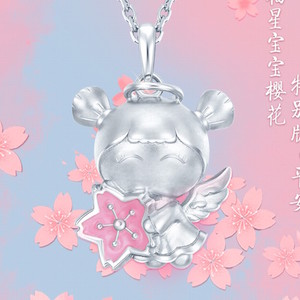At the end of March, when most of the world was going into coronavirus lockdown, China was slowly emerging from it.
On March 19, the Chinese government announced that the number of new domestic COVID-19 cases had fallen to zero, and it began to lift the social-distancing restrictions that had been imposed on most of the country for more than a month. Though some worry China could still be hit by a second wave—or doubt the virus has been truly conquered—at the moment, the country seems to be stirring back to life.
Kent Wong, managing director of Chow Tai Fook, China’s largest jeweler, says that 80%–90% of CTF’s points of sale are currently open. For most of February, 90% of them were closed.
While sales are still down—and mall traffic has not yet returned to pre-virus levels—Wong says he’s heartened that consumers are still interested in jewelry, even if their current preference runs toward lower-price-point items.
“We assumed that it would take two to three months to recover,” he says. “I think in three or four months, we will back to normal. The present data is better than we expected.”
There have been changes in the consumer mindset, he says.
People think more about their health. The big topic on social media is where to go to eat. Tourist sites are flooded.
“People are happy to leave the house,” he says. “A lot of the times when they go to the malls, it isn’t to shop. They are happy just to talk, have tea.”
The tech that people relied on during the crisis has become standard. Videoconferencing is the “new normal,” Wong says. While there was already widespread use of shopping apps in China, they’ve become embraced by even the most stubborn holdouts.
“The older people used to like to go to the market,” he says. “But now that they started using the apps when they couldn’t go out, use of mobile has become common even with older people. They see the convenience.”
Wong says when it become clear the virus would become a serious problem, CTF embarked on a multipronged strategy.
It decided against layoffs. “We believe in the mid- to long-term, this business will come back,” Wong says. “And we believe that our people are our best asset.” (Its executive directors and board did take a 30% pay cut.)
It prioritized communication. “We set up a nationwide information hub led by the risk management team so we can update employees day-to-day,” he says.


